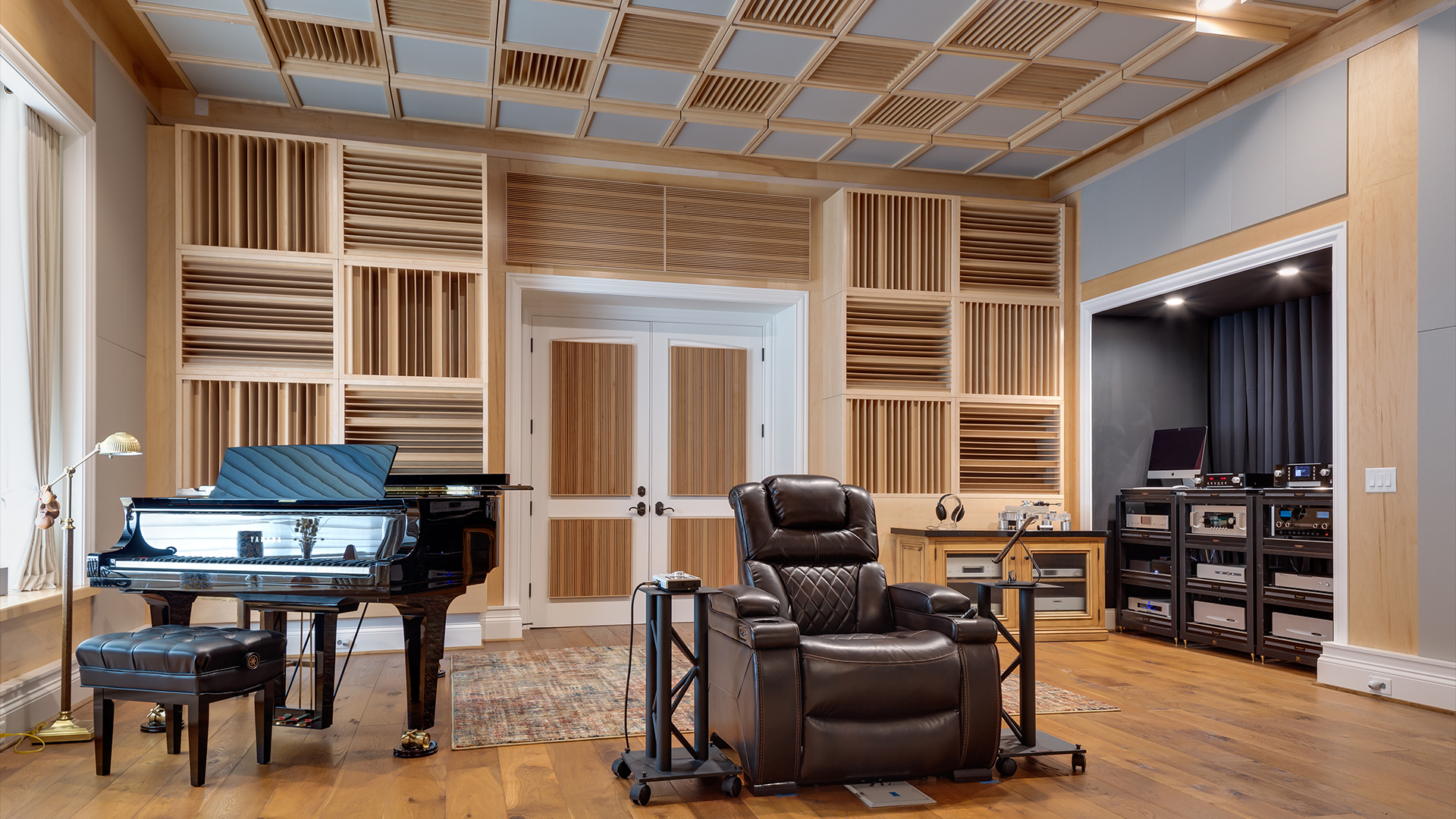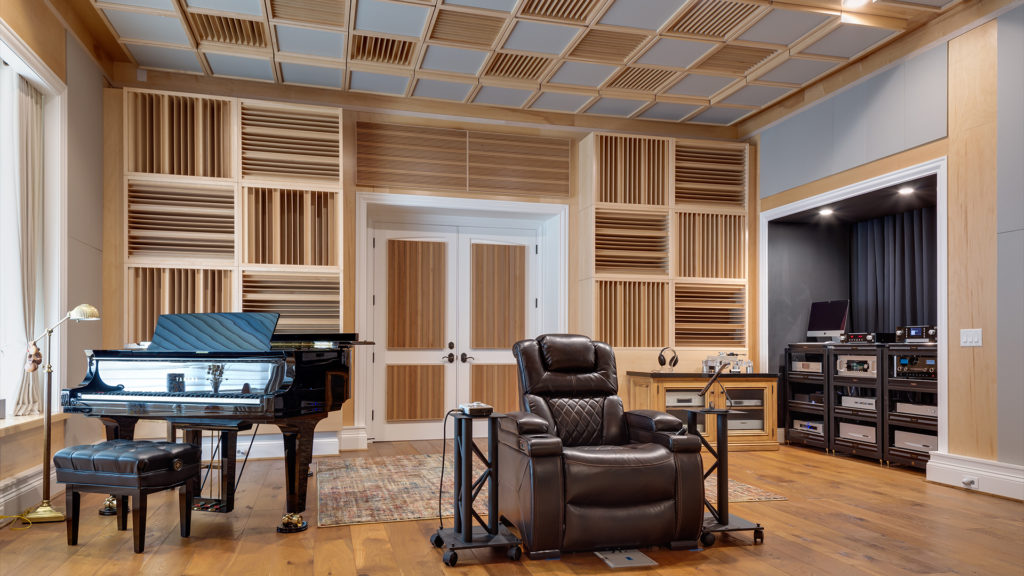
Table of Contents
Decoding Acoustic Wall Coverings
Acoustic wall coverings is a broad search term covering many variables that are unknown. Why are we covering our walls with anything at all, especially acoustic wall coverings? In any small room critical listening environment, we have two main issues that the walls produce. The walls and the ceiling produce both pressure and reflection issues. Low frequency pressure issues are termed room modes. Room modes can exaggerate or attenuate certain octave bands. You will either hear too much or nothing at all. With room modal pressure there is no middle ground.
Reflections from our walls, floor, and ceiling produce reverberation. Reverberation is defined as to how long a sound stays around within a room after it has been sung, spoken, or played. High reverb times interffer with speech intelligibility ratings. S. I. is defined as to how many words one can hear clearly within a ten word sentence. All of these variables must be considered when we are looking for acoustic wall treatments.
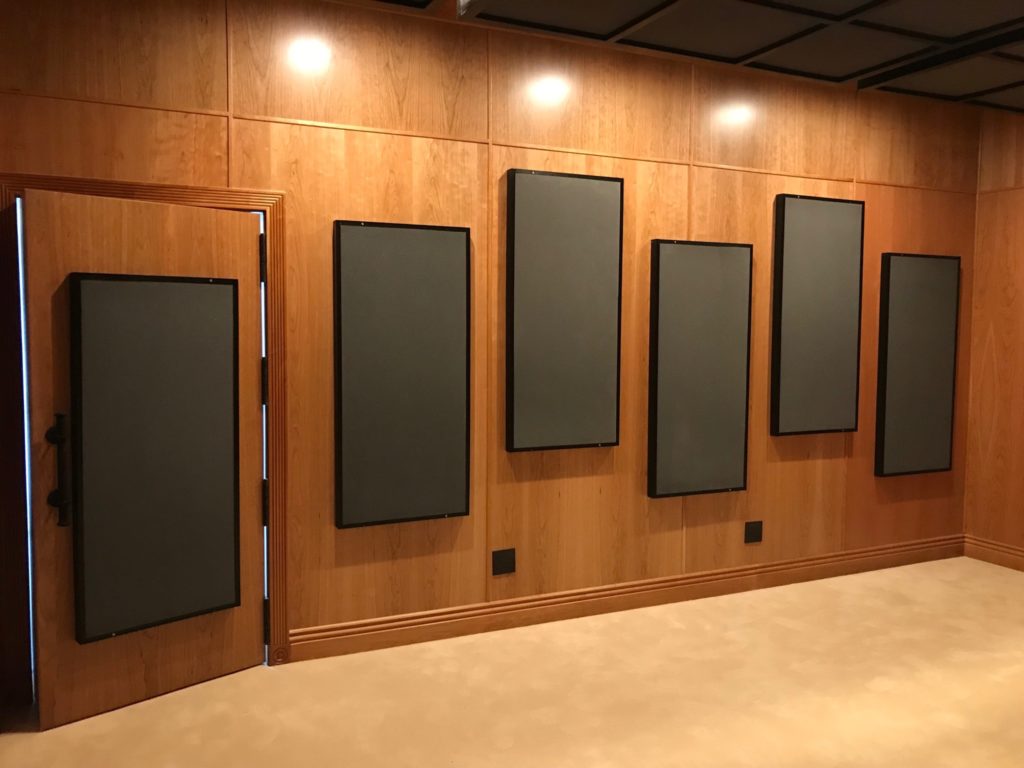
Treating Room Modes with Acoustic Fields
All room modes must be treated. These are pressure based and must be treated with a pressure based system. At Acoustic Fields, diaphragmatic absorption is the most powerful of the three main types we currently have available under our laws of physics. Pressure based absorption technologies are heavy and deep. You will need to give up 12″ of space on each wall surface to treat the lower frequency modal issues. You have two main treatment choices.
You can build the low frequency diaphragmatic absorption directly into the walls or have a large amount of freestanding units on each wall. A good example of this technology in a freestanding form can be found here. Once you have the pressure based issues on the four walls and ceiling addressed, you can begin the process of managing the second issue that all small rooms have reflections.
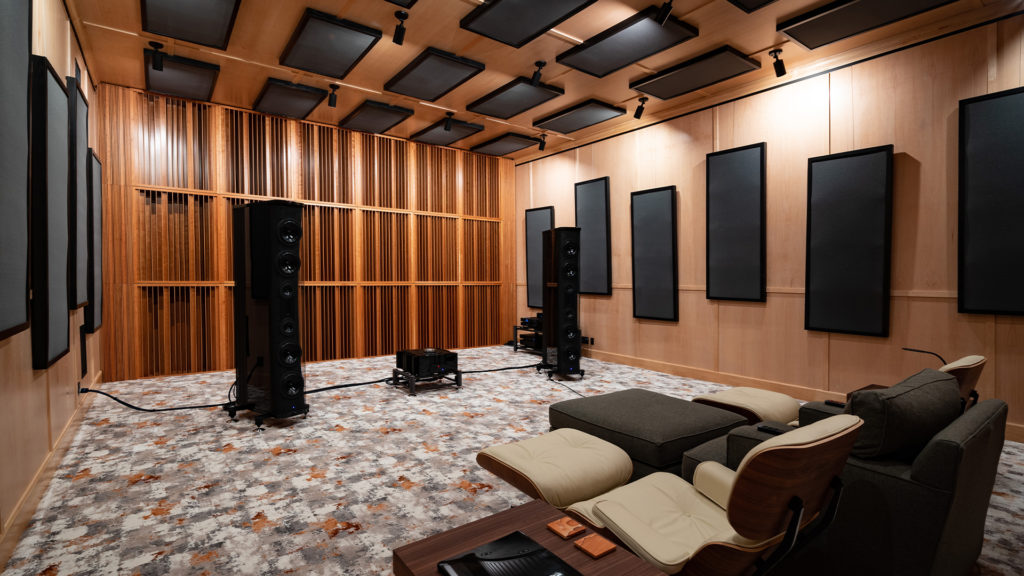
Addressing Reflection Challenges
Reflections from our room walls, floors, and ceiling can add distortion that prevents us from hearing human voice let alone music. Human voice, in order to be heard correctly by our human hearing system, must be heard within a room that has taken the proper effort to manage the reflections or what is called reverberation. Reverberation is defined as to how long a sound stays around within a room after it has been sung, spoken, or played.
There is too much of it and it overstays its welcome. When this occurs we have a negative impact on the speech intelligibility index which is defined as to how many words one can hear clearly in a ten word sentence. In physics, we need to set a goal of 80 SI. This means that eight out of every ten words spoken can be heard clearly. Our brains will fill in the missing data.
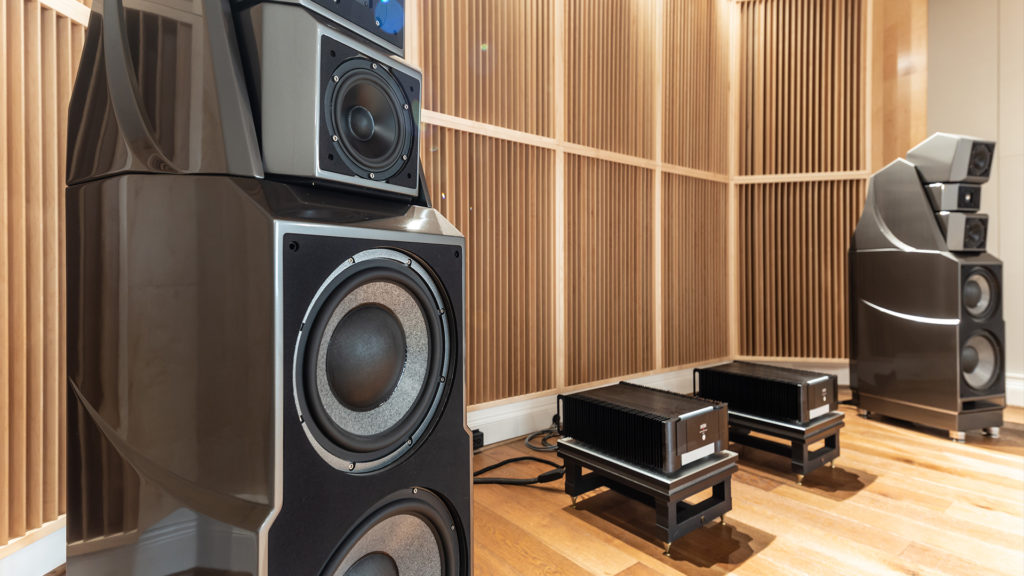
Choosing the Right Acoustic Wall Treatments
The treatment type one uses for reflected energy from our walls, floors, and ceiling surfaces is different from the lower frequency pressure issues. To manage reverberation times within our rooms so that they correspond to the speech intelligibility index requirements requires that we use treatment technologies that focus on the 125 – 500 hz. region. This is the most critical frequency response range to minimize the frequency and amplitude of all sound energy within the room.
When we consider acoustic wall coverings to manage reverberation we are talking about TAP. TAP stands for type, amount, and position of any acoustic wall coverings. You select the correct type that focuses on the 125 – 500 hz. region. You must make sure you have the proper amount or square footage on each surface area. The final is positioning. There are positions within the room that will respond better to treatment based upon room usages.
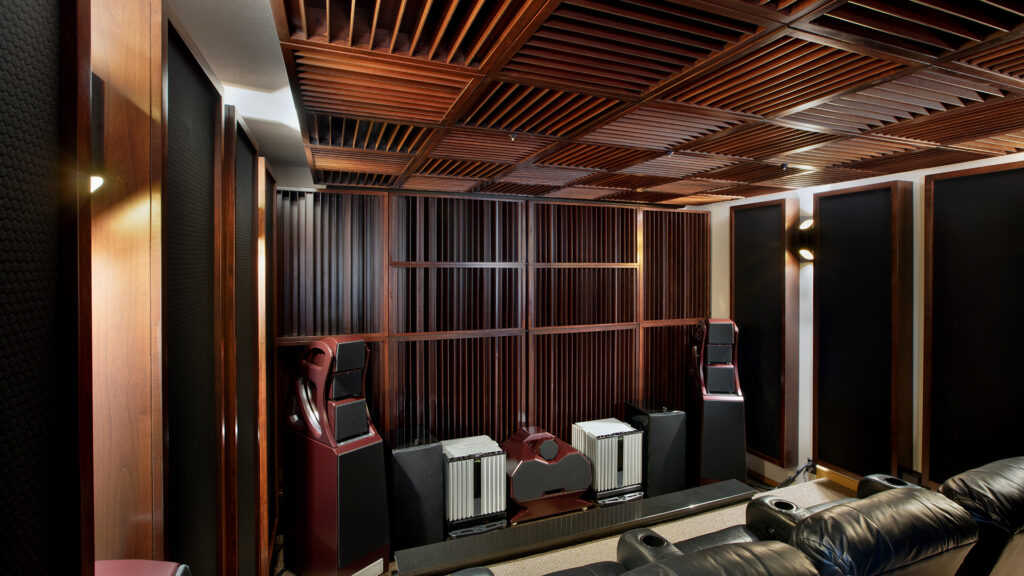
Differentiating Between Acoustic Wall Covering Types
Acoustic wall coverings come in two main types. We have pressure technologies that absorb lower frequency energy. Along with the pressure based technologies, we have technologies that manage reflections to lower reverberation times so we can all hear ourselves think and speak to each other. We also want to hear the music in our churches and auditoriums.
Music and voice are different in both frequency and amplitude so care must be taken in the acoustic design of rooms that are used for both speech and music. With voice we have a speech intelligibility index to go by. With music, we do not have a music intelligibility index to go by. We use a balance between the direct energy from the source and the reflections within the room.


